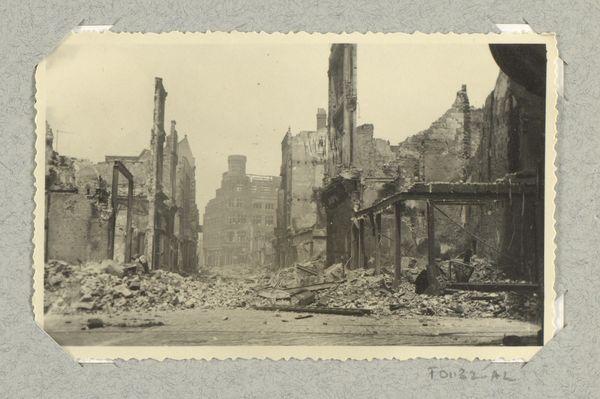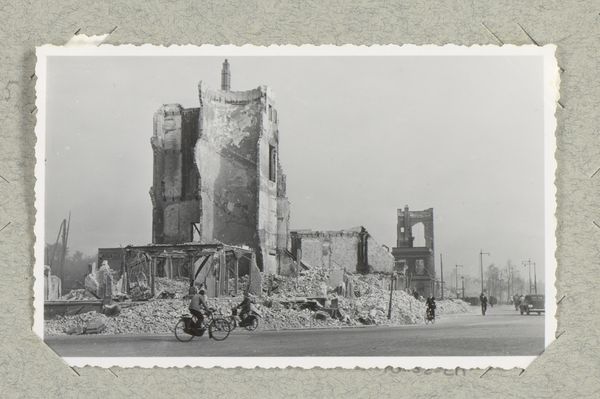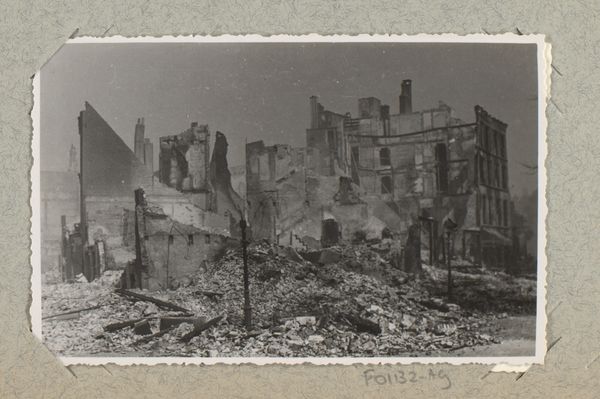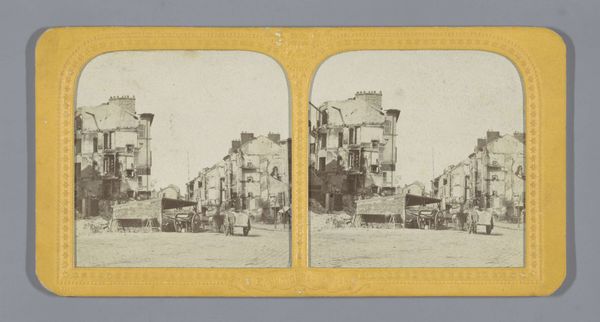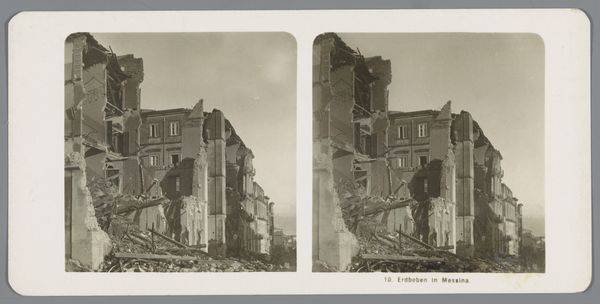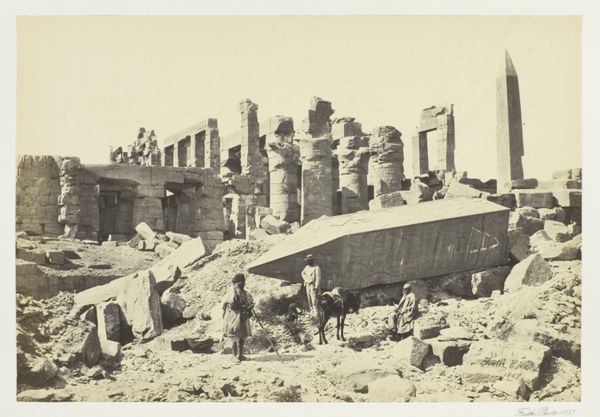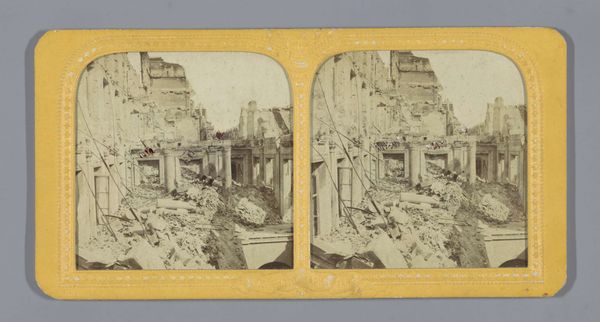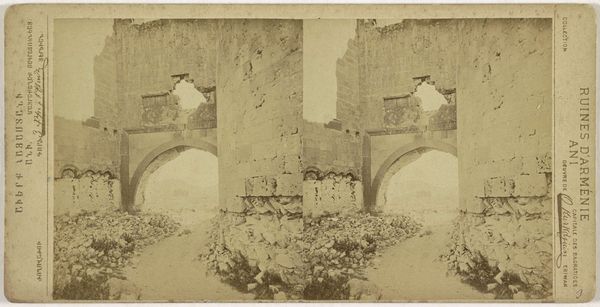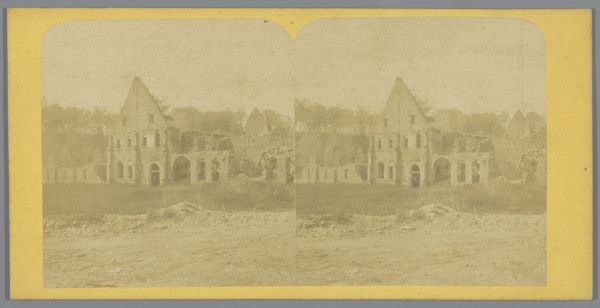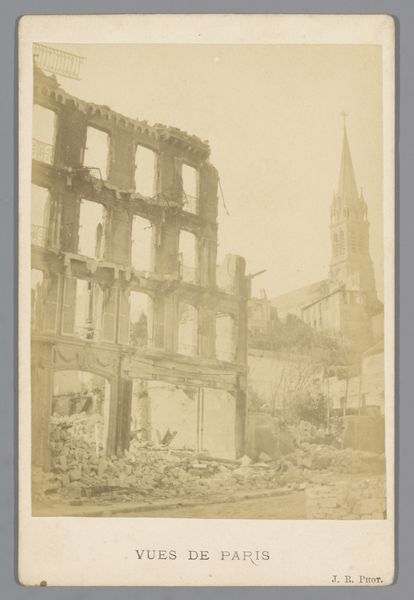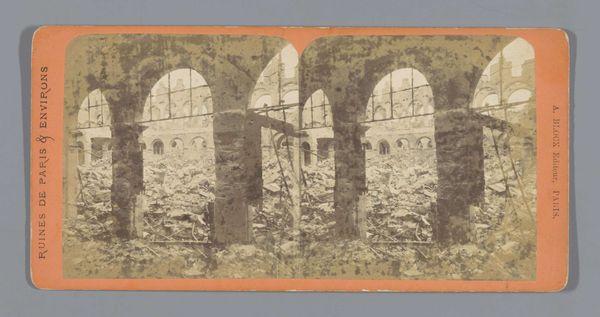
#
aged paper
#
homemade paper
#
paper non-digital material
#
paperlike
#
flat design on paper
#
folded paper
#
soft and bright colour
#
watercolour illustration
#
paper medium
#
design on paper
Dimensions: height 85 mm, width 170 mm
Copyright: Rijks Museum: Open Domain
Editor: This stereoscopic photograph is titled "Ruïne van het Ministère des Finances te Parijs," or "Ruins of the Ministry of Finance in Paris," created circa 1871-1875. I’m struck by the stark contrast between the architectural grandeur and the obvious devastation. What do you see in this piece? Curator: Focusing solely on the visual elements, observe the masterful use of light and shadow. The photographer, J.R., skillfully captures the textures of the ruined facade, contrasting smooth stone with jagged edges. This creates a palpable tension. Note the geometric composition; the receding lines of the building fragments are set against the more amorphous pile of rubble. How do these formal qualities contribute to the overall impact? Editor: I guess that the photographer, J.R. uses these qualities to make you focus on the enormity of destruction and abandonment and, to a point, abstract it through repetition of visual patterns. Curator: Precisely. Consider, too, the limitations imposed by the medium of photography at the time. The tonal range is narrow, rendering a world in shades of grey and sepia. This inherent constraint arguably heightens the sense of solemnity. Also, consider the vantage point the artist has taken, the specific relationship of the camera towards the elements being observed; can we abstract a feeling, solely through its point of perspective? Editor: That's a very interesting consideration. Focusing on just those visual properties really isolates the emotion behind the artwork itself, independent of any contextual understanding. I'll need to work more on analyzing images in that way. Curator: Indeed. Deconstructing an artwork by examining line, texture, tone, and composition illuminates the artist’s intent and formal strategies. It invites us to closely contemplate the fundamental language of art.
Comments
No comments
Be the first to comment and join the conversation on the ultimate creative platform.
